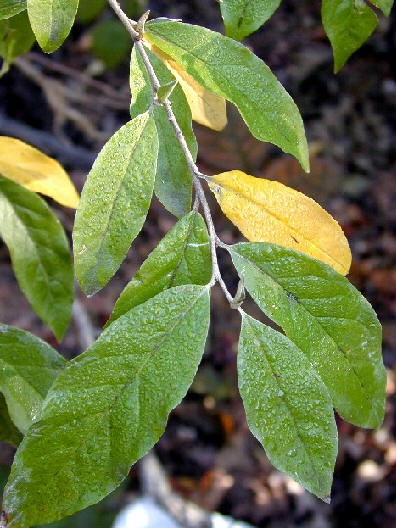| Elaeagnus angustifolia | |
|
Russian Olive
|
|
| Origin Of Species | |
| Europe and Asia | |
| Physical Description | |
Russian olive is a small, irregularly-shaped deciduous tree that may reach thirty feet in height. Oval-shaped leaves are between two and four inches in length and alternate along the branches. Yellow flowers bloom in late spring. Numerous small silvery fruits, which eventually turn red, are present in clusters late in the summer. |
|
| Habitat And Distribution | |
| Russian olive is found along roadsides, abandoned fields, and pastures all over the United States, with the exception of states in the southeastern corner. | |
| Location On Campus | |
| Russian olive is not known to be on campus, but is fairly common along roadsides in the Bon Air area of Richmond. | |
| Negative Impacts | |
| Russian olive disrupts native ecosystems by displacing native vegetation, disrupting normal cycling processes, and dominating available resources. Its ability to fix nitrogen allows it to survive in a wide variety of environments. Its fruits are often eaten by birds that facilitate dispersal over large areas, allowing it to expand its range. | |
| VDCR Invasiveness Ranking | |
| Occasionally Invasive Species Additional Images: Branches of tree |
|
